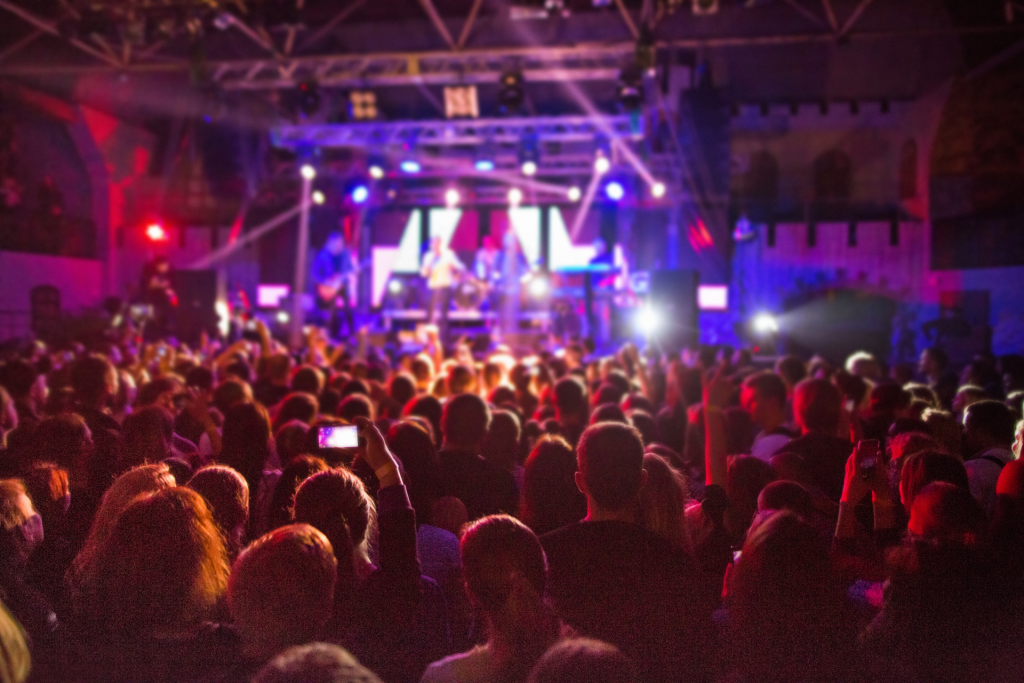Music venues, scattered across the globe, are much more than mere buildings where artists perform; they are sanctuaries of culture, history, and legacy. These iconic venues have witnessed the rise of legendary artists, the birth of groundbreaking musical movements, and moments that have defined the music industry. From the hallowed halls of opera houses to the vibrant energy of rock clubs, each venue carries a story, a unique ambiance that resonates with every chord played and note sung.
In this blog post, we embark on a journey through some of the most storied music venues in the world. We will explore their origins, the legendary performances they have hosted, and the indelible mark they have left on both local and global music cultures. These venues are not just physical spaces; they are monuments to musical history, each with its distinct personality and influence.
From the electric atmosphere of the CBGB in New York City to the grandeur of the Royal Albert Hall in London, these venues have shaped and been shaped by the artists who have graced their stages. Join us as we delve into the stories behind these iconic venues and celebrate their enduring legacy in the world of music.
The Birth of Iconic Venues
The birth of iconic music venues is often a confluence of cultural, historical, and social factors that transcend mere architectural constructs. These venues emerged not just as places for performance but as epicenters of cultural movements, often reflecting the spirit and transformation of the times.
In the early days, many iconic venues started as spaces for different purposes. The Fillmore in San Francisco, for instance, initially opened as a dance hall in the early 20th century and evolved into a focal point for the psychedelic music scene of the 1960s. Similarly, the Apollo Theater in Harlem began as a burlesque theater in the early 1900s before becoming a seminal venue for African American music, launching the careers of countless R&B, Swing, and Jazz artists.
The location of these venues often played a significant role in their iconic status. For example, CBGB in New York City, initially envisioned as a venue for Country, Bluegrass, and Blues, became the birthplace of punk rock, reflecting the city’s gritty and rebellious spirit in the 1970s. Across the Atlantic, the Cavern Club in Liverpool gained legendary status due to its association with The Beatles, who performed there in their early years, making it a pilgrimage site for fans worldwide.
The architectural design of some venues also contributed to their fame. The Sydney Opera House, with its distinctive and innovative design, is not only a landmark for Sydney but also an emblem of modern architecture in venue design, hosting a diverse range of music performances.
Moreover, these venues often became iconic because they were the backdrop for historical music events or movements. The Royal Albert Hall in London, for example, has been a venue for significant concerts and events, including the annual Royal Albert Hall Proms, blending classical and contemporary music performances.
The birth of these iconic venues is thus a rich tapestry of history, culture, and music. Each venue tells a story of the artists that performed there, the audiences that gathered, and the cultural moments they encapsulated, making them timeless symbols in the music world.
Legendary Venues of the West
The Western world, particularly the United States and parts of Europe, is home to some of the most legendary music venues that have played pivotal roles in the evolution of various musical genres and cultural movements. These venues are not just places where music is played; they are temples where musical history was written, where legends were born, and where the heartbeats of cultural revolutions were felt.
Starting with the iconic Whisky a Go Go on the Sunset Strip in Los Angeles, this venue witnessed the birth of numerous rock and roll careers since its opening in 1964. It became a crucial platform for bands like The Doors and Guns N’ Roses, encapsulating the spirit of rock in its purest form. The venue’s intimate setting and pulsating energy made it a hallowed ground for aspiring artists and a beloved haunt for music enthusiasts.
Venturing further, the Red Rocks Amphitheatre in Colorado stands as a natural marvel and a testament to the unifying power of music. Carved into the rocky landscape, it has hosted unforgettable performances under the stars, from U2 to The Beatles, offering an experience that transcends the ordinary. The combination of its natural acoustics and breathtaking scenery has made Red Rocks more than a venue; it’s a pilgrimage site for both artists and fans.
In the heart of Austin, Texas, the Austin City Limits at The Moody Theater showcases the city’s claim as the “Live Music Capital of the World.” Known for its iconic live music show, it has seen performances from a diverse array of artists, embodying the eclectic and vibrant spirit of Austin’s music scene. This venue symbolizes the city’s commitment to preserving and celebrating live music, making it a crucial stop for anyone seeking the soul of American music culture.
Across the ocean, the Olympia in Paris holds a special place in the hearts of music lovers. Since its opening in 1888, it has been an epicenter for cultural and musical exchange, hosting iconic figures from Edith Piaf to The Beatles. The Olympia is not just a concert hall; it’s a historical landmark where each performance adds a new layer to its rich legacy.
The Hammersmith Apollo in London is another beacon of musical heritage. Originally opened in 1932 as a cinema and variety theater, it evolved into one of the city’s most significant concert venues, hosting a range of artists from David Bowie to Queen. The Apollo’s art deco design and legendary status in the British music scene make it a symbol of the enduring appeal of live performance.
These venues in the West are more than just buildings; they are living, breathing entities that have absorbed the sounds, emotions, and memories of generations. They stand as monuments to the unending power of music to inspire, unite, and transform. As we continue to explore iconic music venues around the globe, the stories of these Western legends remind us of the unbreakable bond between place, culture, and melody that continues to shape our world.
Eastern Gems of Music
The musical landscape of the East is as diverse and vibrant as its rich cultural tapestry, boasting an array of venues that have not only hosted musical performances but have also been instrumental in the evolution of regional and global music scenes. These venues, spread across various Asian countries, are more than just concert halls; they are cultural icons, representing the unique fusion of tradition and modernity that characterizes the music of the East.
One such iconic venue is the Nippon Budokan in Tokyo, Japan. Originally built for judo competitions in the 1964 Olympics, the Budokan quickly became a coveted stage for international music artists, famously hosting The Beatles’ first concert in Japan. Its unique martial arts origin and subsequent transformation into a music venue symbolize the blending of traditional Japanese culture with the global music scene, making it a historic and cultural landmark.
In Mumbai, the Royal Opera House stands as India’s only surviving opera house, intricately designed and rich in history. Restored to its former glory, it now serves as a versatile space for classical concerts, traditional Indian music performances, and modern shows, reflecting the diverse musical heritage of India. The venue’s architecture, with its blend of Baroque and local styles, mirrors the eclectic nature of Mumbai’s music scene.
Moving to South Korea, the Seoul Olympic Stadium, built for the 1988 Summer Olympics, has since been a central stage for major K-pop concerts and international events. This venue, with its vast capacity and modern facilities, not only showcases South Korea’s technological advancements but also its meteoric rise in the global music industry, particularly in the genre of K-pop, which has taken the world by storm.
Beijing’s Forbidden City Concert Hall, nestled in the heart of the Imperial Gardens, offers a stark contrast with its traditional Chinese architecture and serene surroundings. This venue is renowned for hosting classical music performances, providing a harmonious blend of China’s rich historical heritage with the timeless beauty of classical music. It stands as a testament to China’s respect for its past while embracing contemporary artistic expressions.
These Eastern gems represent the depth and diversity of the region’s musical and cultural landscapes. They are not just venues; they are custodians of history, each telling a unique story of the East’s journey through the annals of music. As we continue to explore iconic music venues around the globe, the enduring legacy of these Eastern venues reminds us of the universal language of music and its power to transcend boundaries and unite cultures.
Theaters and Opera Houses
Theaters and opera houses, with their grand architecture and rich histories, stand as enduring symbols of the cultural and artistic heritage of cities around the world. These venues, often architectural masterpieces in their own right, have been the sites of transformative performances, playing a crucial role in the development of the performing arts and the cultural life of societies.
The Teatro alla Scala in Milan, Italy, is one of the most prestigious opera houses in the world. Known simply as La Scala, this 18th-century theater is synonymous with the history of opera. The hallowed stage of La Scala has witnessed the premieres of numerous operas by legendary composers like Verdi and Puccini. Its opulent interior, with plush red velvet and gilded balconies, transports audiences to a world where every performance is an event, a celebration of the highest artistic expression in opera.
In contrast, the Bolshoi Theatre in Moscow is a beacon of Russian performing arts, particularly known for its world-class ballet and opera performances. The Bolshoi, meaning “grand” in Russian, lives up to its name with its grand neoclassical facade and luxurious interior. The theater has been a cultural stronghold throughout Russia’s turbulent history, reflecting the nation’s deep-rooted appreciation for ballet and opera.
New York City’s Metropolitan Opera House, located in the Lincoln Center for the Performing Arts, is a modern counterpart to these historic institutions. Known as The Met, it is a hub of artistic innovation and excellence in the world of opera. Its modernist architecture, with vast stages and cutting-edge technology, has hosted some of the most spectacular opera productions, making it a symbol of contemporary operatic grandeur.
The Palais Garnier in Paris is not just an opera house but a symbol of the French capital’s architectural and artistic splendor. With its lavish marble grand staircase, intricate frescoes, and the iconic Chagall-painted ceiling, the Palais Garnier is a masterpiece of the Beaux-Arts style. It has been an inspiration for stories like ‘The Phantom of the Opera’ and continues to enchant visitors with its opulent beauty and world-class performances.
These theaters stand as testament to the enduring appeal of live performance and the power of the arts to move, inspire, and transform. As we explore these temples of performing arts, we are reminded of their essential role in enriching and enlivening the cultural fabric of our world.
Contemporary Music Venues and Their Modern Appeal
Contemporary music venues have become cultural epicenters, reflecting the evolving tastes and technologies of the modern music scene. Unlike their traditional counterparts, these venues are characterized by their innovative designs, cutting-edge technology, and their ability to adapt to diverse music genres, from indie rock to electronic dance music.
A prime example is the O2 Arena in London, a symbol of modernity in the music venue landscape. With its state-of-the-art sound system and large seating capacity, the O2 has hosted some of the biggest names in music, offering audiences a dynamic and immersive experience. Its versatility and technological prowess make it a preferred destination for major concerts and events, showcasing the future of live music experiences.
In Los Angeles, the Hollywood Bowl stands out for its iconic shell-shaped stage and outdoor setting, offering a unique concert experience under the stars. It’s a fusion of natural beauty and technological innovation, allowing for a wide range of performances, from classical orchestras to contemporary pop artists. The Hollywood Bowl exemplifies how contemporary venues can blend environment and technology to enhance the live music experience.
These modern venues are more than just spaces for music; they are platforms that connect artists and audiences in new and exciting ways. They represent the ongoing evolution of live music, adapting to the changing demands of artists and audiences while maintaining the magic of live performance. As we continue to explore the world of music venues, these contemporary spaces remind us of the ever-changing, yet timeless nature of music and its ability to bring people together.
The Role of Venues in Music Festivals
Music festivals have become a cornerstone of contemporary culture, and the venues that host them play a pivotal role in defining the festival experience. These venues, ranging from sprawling outdoor spaces to intimate indoor settings, are more than just physical locations; they are the beating heart of the festival’s atmosphere and identity.
Outdoor venues, like the vast fields of Glastonbury Festival in the UK or the desert landscape of Coachella in California, offer a unique, immersive experience. These natural settings provide a canvas for festival organizers to create a world unto itself, where music, art, and nature intertwine. The open-air environment allows for larger audiences, fostering a sense of community and freedom among festival-goers.
On the other hand, urban music festivals like Lollapalooza in Chicago utilize city parks and streets, integrating the festival experience with the city’s vibe. These venues offer accessibility and a sense of urban energy, attracting diverse audiences and transforming parts of the city into vibrant hubs of musical and cultural activity.
The choice of venue significantly influences the festival’s character, from the layout and acoustics to the type of audience it attracts. As festivals continue to evolve, the role of venues becomes increasingly important in shaping the overall experience and success of the event. These spaces are integral to the creation of unforgettable memories and the forging of a unique festival identity.
Preserving Musical Heritage: The Challenges Venues Face
Preserving the heritage and legacy of music venues is a complex challenge, as these spaces face numerous pressures in the modern era. The task of maintaining these cultural landmarks often involves navigating financial constraints, modernizing facilities, and adapting to changing urban landscapes and audience expectations.
One of the primary challenges is financial sustainability. Many historic venues struggle with the costs of upkeep and renovation, necessary to preserve their historical character while meeting contemporary safety and technology standards. This financial strain is often exacerbated by fluctuating market trends and competition from newer, more technologically advanced venues.
Another significant challenge is the need for modernization. While retaining their historical charm is crucial, venues must also adapt to the evolving technical requirements of modern performances. This includes upgrading sound and lighting systems, improving audience facilities, and ensuring accessibility, all without compromising the venue’s historical integrity.
Urban development poses yet another hurdle. Many iconic venues are situated in prime urban areas, making them vulnerable to real estate pressures. Balancing the preservation of these cultural spaces with the demands for urban expansion and redevelopment requires careful planning and often, community advocacy.
In the face of these challenges, preserving music venues is about safeguarding cultural history. It’s a delicate balance between maintaining the historical essence of these spaces and adapting to the modern era’s demands.
To Sum It Up
Exploring the world of iconic music venues reveals a rich tapestry of cultural, historical, and artistic significance. From the legendary halls of the West to the vibrant stages of the East, each venue carries its unique story and legacy. The grandeur of opera houses and theaters underscores the timeless allure of classical arts, while contemporary venues reflect the dynamic and evolving nature of modern music. The role of venues in music festivals highlights their ability to shape experiences and create communal bonds among diverse audiences.
However, these iconic spaces face significant challenges in preserving their musical heritage. Balancing modernization with historical integrity, financial sustainability, and the pressures of urban development are ongoing struggles. Yet, these venues are more than mere structures; they are symbols of our cultural heritage, epicenters of creativity, and essential contributors to the global arts scene.
As we celebrate the enduring legacy of these music venues, we recognize their role in shaping not only the music industry but also the cultural fabric of societies. They remind us of the power of music to transcend time and place, connecting people across generations and geographies. Preserving these venues is not just about maintaining buildings; it’s about honoring our collective history and ensuring the continued vibrancy and diversity of the music world for future generations.



